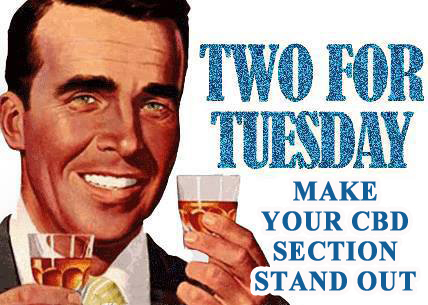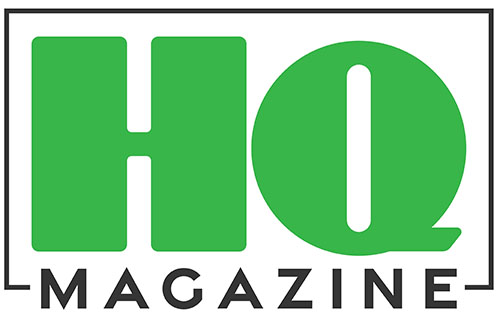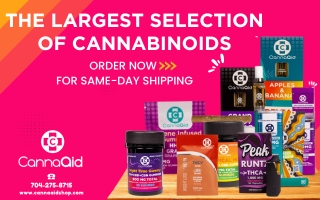 There’s no shortage of people seeking CBD. In fact, awareness of CBD jumped from 47% in 2018 to 70% in 2019, according to a Nutrition Business Journal survey, and according to according to the Hemp Business Journal, global CBD market will grow to $2.1 billion in consumer sales by 2020.
With those kinds of numbers backing its popularity, CBD should sell itself. But as with any product category, there’s more to selling it in a retail environment than simply grouping products together and creating eye catching displays. With that in mind, here are two tips for making your CBD section stand out so that you can make more sales.
Focus on Educating the Consumer
As is often the case in new markets, most consumers will need to be educated about the legality, effectiveness and uses of CBD. It’s still a no-no to promote the health and wellness benefits of CBD with anything other than anecdotal evidence, having literature available from a trustworthy source is essential. Project CBD has brochures you can easily download and print out to have on hand.
Brand-provided literature is important because people like taking stuff home with them whether or not they buy the product. Brochures are mobile and give customers the chance to become more familiar with the product on their own terms. Don’t forget to staple one of your store business cards to any marketing material you hand out.
Lock It Up
Visit any store, whether its electronics or makeup, and you’ll find the best stuff in a locked showcase. The reasoning is two-fold. A customer can’t just walk right up and pluck the product off the shelf. That’s a big plus for CBD products that are often high-value items in small containers, making them east targets ideal shoplifters. Some people might be dissuaded from a purchase that requires in-store help, but for those that are truly interested in the product, the situation gives store employees the opportunity to engage, educate and even up-sell.
There’s no shortage of people seeking CBD. In fact, awareness of CBD jumped from 47% in 2018 to 70% in 2019, according to a Nutrition Business Journal survey, and according to according to the Hemp Business Journal, global CBD market will grow to $2.1 billion in consumer sales by 2020.
With those kinds of numbers backing its popularity, CBD should sell itself. But as with any product category, there’s more to selling it in a retail environment than simply grouping products together and creating eye catching displays. With that in mind, here are two tips for making your CBD section stand out so that you can make more sales.
Focus on Educating the Consumer
As is often the case in new markets, most consumers will need to be educated about the legality, effectiveness and uses of CBD. It’s still a no-no to promote the health and wellness benefits of CBD with anything other than anecdotal evidence, having literature available from a trustworthy source is essential. Project CBD has brochures you can easily download and print out to have on hand.
Brand-provided literature is important because people like taking stuff home with them whether or not they buy the product. Brochures are mobile and give customers the chance to become more familiar with the product on their own terms. Don’t forget to staple one of your store business cards to any marketing material you hand out.
Lock It Up
Visit any store, whether its electronics or makeup, and you’ll find the best stuff in a locked showcase. The reasoning is two-fold. A customer can’t just walk right up and pluck the product off the shelf. That’s a big plus for CBD products that are often high-value items in small containers, making them east targets ideal shoplifters. Some people might be dissuaded from a purchase that requires in-store help, but for those that are truly interested in the product, the situation gives store employees the opportunity to engage, educate and even up-sell. Recent Articles
THCA has gained substantial attention over the last year due to a loophole in the Farm Bill that has allowed countless hemp companies to sell traditional psychoactive cannabis as a legal hemp product.
By
If your store needs a jolt, here are 7 items to stock that can help attract new customers and expand your appeal.
As these products become widely used across the nation, people are often asking what the difference is between these intriguing new hemp highs.
By
As we continue to chart the course through the ever changing waters of the hemp industry, recent legislative and regulatory developments have given rise to both challenges and opportunities for business owners and stakeholders.
Hemp and cannabis beverages are the latest in this consumer-driven quest to find the perfect method of getting the essential chemicals found in the cannabis plant—from the garden to the body, the body to the mind.
By
The CEO and founder of Ultimate Product
Distributors (UPD) was the first to suggest
that vaping products should be sold alongside
cigarettes. If that seems obvious, well, that’s how
the greatest ideas always look in the rearview
mirror.
By
Live pipe-making demonstrations
are just one of the ways shop owner
Treasure Rose is expanding the idea of
what a smoke shop can be.
By
In a significant victory for the hemp industry, Governor Ron DeSantis has vetoed Senate Bill 1698, which would have imposed stringent regulations on hemp-derived products.
Subscribe to our newsletter for updates on industry news and special offers from HQ!

Published By
HeadQuest International LLC
6300 Riverside Plaza Ln NW, Suite 100
Albuquerque, NM 87120
505-275-6049
HeadQuest International LLC
6300 Riverside Plaza Ln NW, Suite 100
Albuquerque, NM 87120
505-275-6049











